by Rhawn Joseph, Ph.D.
Rhawn Joseph, Ph.D.
BrainMind.com
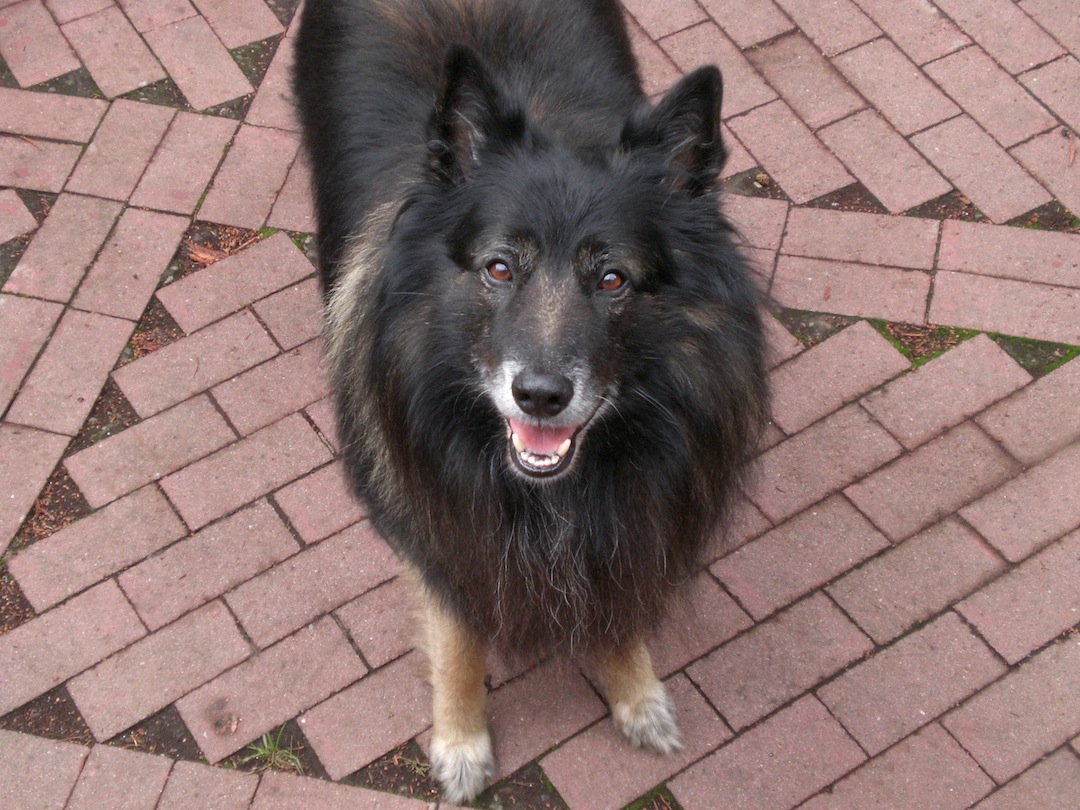
The Wolfish Mind of the Canine
The first "domesticated" dogs, were not dogs at all, but wolves, and they came in all sizes, ranging from the dire wolves who stood as big as a small horse, to the relatively "smaller" tail-waggers who weighed over 100 pounds.
These "tail-waggers" appear to have first adopted "humans" as friends, perhaps 100,000 years ago, when the first "modern" H. Sapiens Sapiens appeared on the scene in parts of Asia, Australia, and later the Middle East and EurAsia (about 35,000 years ago).
It is thought by some, that all "pure breed" dogs "evolved" from grey wolves in Asia, about 15,000 years ago, though the evidence for this is speculative at best, for certain breeds in fact, trace their ancestry to Egypt and Mesopotamia (e.g. greyhound) or EurAsia (e.g. shepherds).
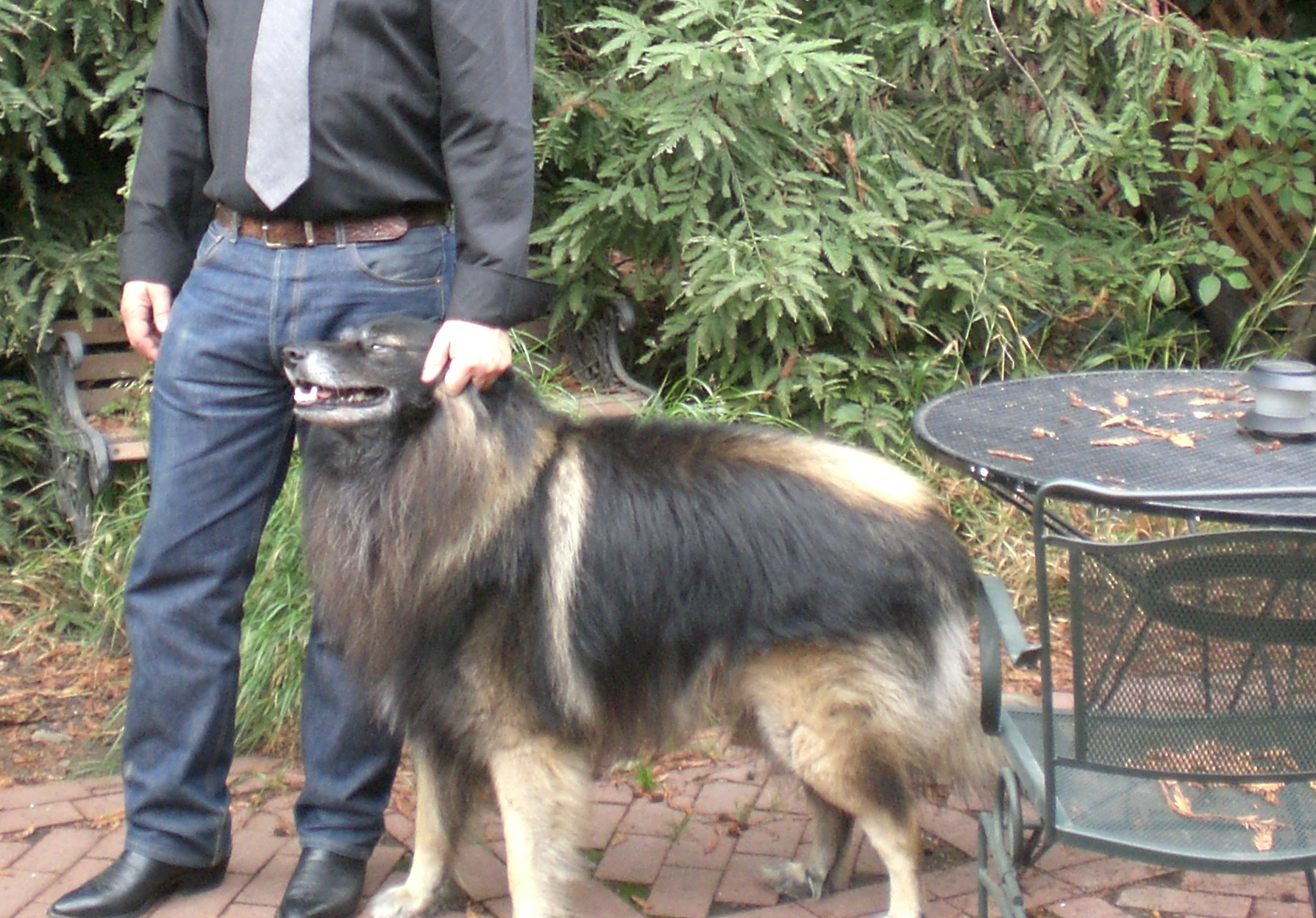

The most intelligent dogs, by far, are the Belgian Shepherds and German Shepherds, and these are the breeds which most resemble wolves in physique and intelligence. Shepherds have the most complex responsibilities of any breed, and that is shepherding, guiding, protecting, and gathering and leading the herd or flock, and they perform these duties with incredible skill because they are so intelligent and so closely related to wolves who engage in the same exact behaviors--which is also why farmers and ranchers have sought to exterminate wolves for much of human history.
In the 1800's, for example, western ranchers frequently discovered that dozens of their cattle or sheep would disappear during a single evening, without a trace. Many at first blamed the Indians, only to discover that the local natives were starving and played no role in the rustling of their cattle. Who was to blame? Wolves.
A pack of wolves would cut off part of the herd, shepherd them into a canyon or some other protected area, and corral them there for days or weeks, in order to eat them one day at a time, at their leisure. Modern ranchers have compared wolf packs to a football team that gets better and better with practice.
Dogs and wolves are remarkably like humans--which is why, in the case of dogs, they get along so well.
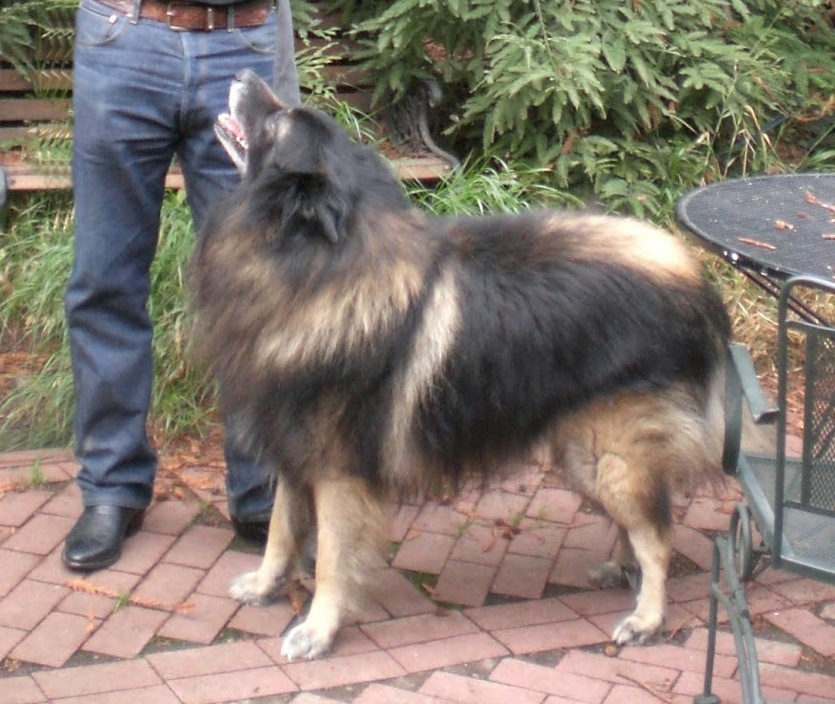
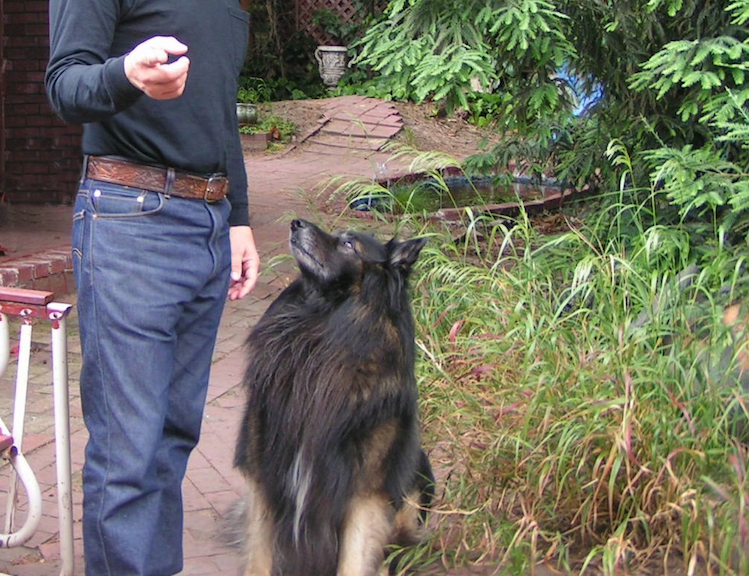
Dogs and wolves are extremely social animals who maintain a home base, or den, which they defend, and where they rear and care for their young. Wolves and wild dogs often develop monogamous pair bonds, and bond for life, though divorces sometimes occur 52. They are possessive, act with jealousy, and attempt to prevent other members of their pack from establishing similar bonds with their mates.
Among a pack of wolves, although there may be several members of both sexes, usually the dominant alpha male will bond exclusively with his alpha female. She in turn refuses to be mounted by other males (who seldom make such advances) and when other lower ranking females go into heat they will be harassed by male and female alike and sometimes driven away or to the periphery of the group until she is no longer sexually receptive. The other males, although no doubt desirous of sex, nevertheless respect the authority of their leaders and strictly adhere to pack discipline, avoiding sexual contact with the temporary outcaste whom they will harass as well.
Dogs and wolves place a high premium on olfactory communication via pheromones. But, status, anger, aggression, playfulness, curiosity, defense, and sexual interest and arousal, are also indicated through body posture, facial gestures, muscle tension, and of course, tail wagging. They also engage in considerable body contact. For example, courting pairs will flirt with their heads by tossing them coyly to the side, often with their tongues out, and often they will throw themselves together and wrap their forelegs around each others necks while they playfully bite at the neck and engage in a sort of wrestling. They will also nibble at one another's mouth and will pretend to bite one another on various regions of the body.
Dogs and wolves both have very expressive faces. They smile when happy, and like apes and humans, they also have a smile that indicates fear or anxiety, or the desire to appease aggressive actions of a more dominant male or female. By their facial expression and body language they also indicate shame, guilt, disappointment, expectation, excitement, depression, and irritation.
Similarly, although most people think that when a dog barks, that a bark is a bark, this too can communicate different meanings which is reflected by variations in the manner in which they produce their sounds. The most common bark such as when one dogs sees another, could be roughly translated as "hey! Hey! Hey!" However, by subtle shifts in intonation to a higher pitch, this same bark can indicate "come on, come on," such as when they are excited about the possibility of going for a walk or a ride in the truck. If they are extremely happy and excited their bark may instead sound like a scream of joy. In contrast, a lower pitch bark, often accompanied by a growl can indicate irritation such as when a someone dares trespass on their territory.
Similarly, not all growls are the same. A deep rumbling growl often emphasizes aggression and feelings of anger and belligerence. However, a softer higher pitched growl may indicate frustration or a desire to obtain something, such as if they want your attention so that they can come in or go outside.
Wolves will sing and howl when they are happy or sad, and they usually howl before the onset of a hunt. When traveling alone they often howl to communicate and keep in touch, or to communicate with neighboring packs, or sometimes to advertise the fact that they are alone and looking for a mate, or just to advertise their presence and to talk with other wolves who might also be lonesome.

Dogs and wolves are also quite mischievous and enjoy teasing and playing tricks on one another or on their human. For example, my two year old Belgian Shepherd, often likes to sneak up or run past me or my 6 year old Belgian Shepherd, and give a little nip on the butt or steal certain objects from my hand (like a sock I am about to put on). When I give them both a cookie, my female often likes to wait until the male has finished his, and then she will take hers and prance back and forth to tease him with it. However, the male has started to simply take the cookie away so she does not do this much anymore. Wolves too like to tease and play pranks, such as leaping and trying to steal the cap someone is wearing or a handkerchief hanging from a coat pocket.
If given the chance, dogs also are quite capable of at least trying to mimic human beings. Many years ago, I was absolutely astonished when I strolled into the living room only to spy my 6th month-old puppy walking around with my Levi Jacket draped over his back and shoulders. --And no, I am not making this up!
Dogs and wolves do more than simply smile, growl and kiss, so as to indicate their intentions or feelings but rely on a considerable degree of body language. An alpha male, for example, when approached by a subordinate or strange male will stand very erect in a very regal fashion, with his ears up and head erect, mouth held firmly together or in a tight grin. If he needs to prove to an intruder that he is dominant he may give him a shove, mount him, and if that fails to be convincing, will wrestle and throw him to the ground. Usually, a subordinate will respond when so treated, by grinning in submission or by throwing himself on his back, exposing his stomach and neck but with his tail firmly pressed against their tummy so as to protect his genitals 54.
If two strange male dogs meet for the first time they tend to approach one another slowly in a very stiff legged manner with their tail and head held very erect and the mouth closed in a very tense, tight lipped fashion. The more dominant of the two may then take his forepaws and, like a boss to his subordinate, place them across the shoulders or the back of his opponent, or give him a shove with his shoulders and then either mount him or escort him off the property. Or the subordinate member will voluntarily tuck his tail between his legs and slink away with an embarrassed grin of appeasement on his face. Dominant males will respond in this manner even when not on their own territory.
Such behaviors are easily recognized and understood by humans, and if a dog were to approach a man in this manner, it would be obvious that the dog is not being friendly. No words need be spoken, nor would a growl or a bark need be uttered.
Dogs and wolves, like humans, often form coalitions. Sometimes a dominant male initiates attacks against others so as to enforce discipline or to maintain his status. Sometimes when others are being harassed by other subordinates he simply watches, and in some cases he may come to the aid of a subordinate and even allow him to get a few good whacks in before breaking up the fight. Moreover, sometimes subordinates will approach the alpha male so as to solicit his support if they feel they have been wronged in some manner. They are also capable of shifting their coalitions such that even subordinate males and females may temporarily join together so as to prevent or dissuade a dominant from engaging in a certain action.
Dogs and wolves, like humans, often share the spoils of the hunt. Indeed, dominant male wolves not only share food with their mate, the sick, injured or the young, but have been observed to distribute food among fellow pack members, sometimes by even throwing it through the air to a compatriot--though, admittedly this latter type of behavior appears to be rather rare. In general, alpha males and female tend to eat first and are then followed by the other pack members according to their status.
Fathers also take an active part in the rearing and training of the young, whereas male chimpanzees, like many modern day humans, are content to have sex and then simply abandon the mother and her infants once they are born. Moreover, although male chimps can become excited and harm any infant or female who happens to get in their way, male wolves and dogs are very solicitous of pups and especially their own offspring and would almost never harm them. Other pack members, usually females, will also baby sit pups while the others are out hunting. Such behavior is not a product of "instinct" however, but is maintained via cooperative communication in the form of body language and is dependent on the manner in which the dog or wolf was raised.
Monkeys and chimpanzees do not seem to mourn to deeply when a friend dies, though they are obviously highly disturbed if they witness the death of a friend. A chimpanzee mother will eventually drop her dead infant on the ground and leave it there without a look back. In contrast, wolves and dogs mourn for weeks and will sometimes bury their young. And although these creatures love to dig, once buried the site will not be molested. If a dog's "human" dies, that is, if they had a close relationship, the dog might mourn and howl and become severely depressed for weeks or months. They may even refuse to eat and die.
Like human beings who for the last half million years up until the present, have spent at least a third of their life engage in cooperate hunting, an activity which places a premium on silence and gestural communication, dogs and wolves are essentially cooperative group hunters who, while engaged in the hunt, communicate in a similar fashion.
It is because of these similarities that dogs and humans were able to form and establish bonds that have persevered for eons. That is, since they hunt in a similar fashion, humans and dogs are able to hunt together. Since they both maintain a home base which they defend, they have been able to live together. Since they both establish and are respectful of dominance relationships, dogs were able to cohabitate with humans and accept a subordinate position. Since both are capable of forming loyal monogamous relationships, close social and emotional bonds could be formed between a single human, or his family, and a single dog. Given all these similarities and the ease at which they communicate and live together, dogs became useful not only to hunters, but to herdsman, farmers, and modern humans as both protector and loyal friend.
As is the case with humans, the world of scent is extremely important to a dog. By taking a sniff here and there, they can determine who has been in the vicinity, that animal or human's identity, the health and status of that individual, if it is male or female and in heat, if it has recently eaten and what, and so on. One reason dogs love to hang their heads outside moving cars is not because they like the wind, but the oceans of divergent smells--to hang one's head out an open window in a moving car puts a dog in olfactory heaven.
Dogs and wolves also communicate by scent, which is why they spend so much time investigating each others hindquarters--it is a way of saying hello, how are you?
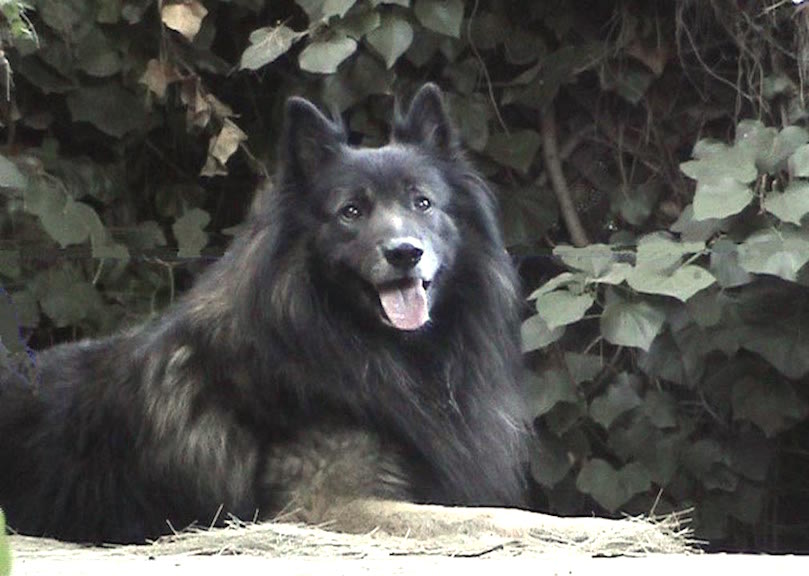
Dogs thus communicate through sound, by scent, and facial expression, but are obviously limited in their ability to use their limbs for gesturing, a consequence of their ancestors taking to the ground whereas ours took to the trees and developed a precision grasp. In fact, our ancestors were probably hunted and chased up those trees by these ancient predatory canine ground dwellers. Early humans probably sometimes served as a tasty canine snack.
Nevertheless, due to physical limitations, although dogs and wolves are capable of performing complex actions, and are extremely sensitive to social signals, they cannot talk, and much of their gesturing occurs via posture, and facial expression--though Thomas Edison claimed he was able to teach his dog to talk and to say: "How are you grandma?" Unfortunately, as grandma couldn't speak dog, Edison's furry friend never got an answer. Poor puppy!!
















